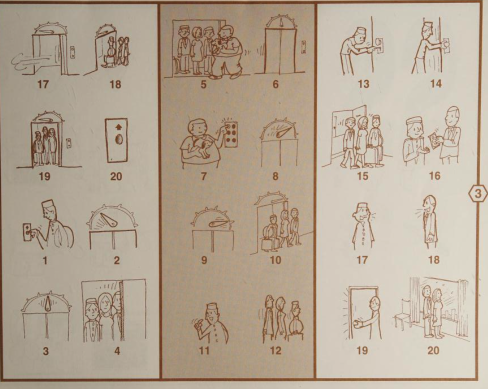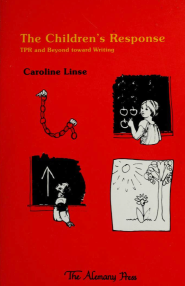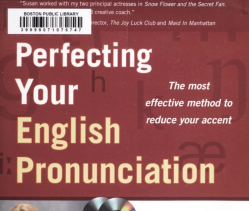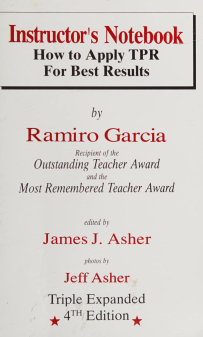Language Acquisition - Self Teaching Methods
This guide, while titled "English as a Second Language," is applicable to language learning in general. It draws inspiration from traditional methods like reading, writing, and speaking, and incorporates modern techniques such as mimicking-immersion and movement-based learning. By combining these approaches, you can create a comprehensive and effective language learning experience. So first, choose your language and then try these activities!
The Buy In
The first step to learning a new language is to actually commit to doing so. Repeat it to yourself, tell your friends and if you can, pay for a class. When you tell others, repeat it and pay for it - you buy in to the idea and commit to spending the time that it takes to actually master a skill. This is true with anything you are learning, from mathematics to linguistics. The time you spend participating and playing in the field is an investment in what you can learn therein - do and play! That's the key to learning.

The buy-in is accompanied by an alter-ego. This alter ego is basically you in the foreign language and culture. You are changed by the language you learn. You are now more then your parts. Your alter-ego cannot speak as you do, because this is not their native language or culture; but you are becoming something more than you were. In this language, you are younger, unencumbered by norms and context. You begin anew. Allow yourself a nickname. Let that person make silly mistakes and take chances speaking. Let them take the language tests.
"Immersion"
Everyone and anyone will tell you that immersion is the best way to learn a language. What normally would take you two or three years, takes only a few months. However, not everyone can drop everything and just spend those months learning a language. Immersion only works when you let the language in - commit to learning it and challenge yourself to participate and play with it.
Make it Meaningful!
- Find music in the target language. Become a fan. Learn the songs. This has an added cultural bonus!
- Find shows or films and watch them with subtitles. Although many claim that it is better without, this is play - get to know the thinking of the cultural, the way they use humor, the styles and flares. Enjoy it with meaning and get an audio bath.
- Turn on the radio or podcast in the target language - washing dishes? Turn it on. Folding laundry? Turn it on. Any task that is not diminished by external audio cues. Sleeping?? Turn it on. The brain absorbs everything and filters unneeded things out. Exposure to the target language in these ways tells your brain - this is now part of my life. The subconscious absorption mimics the immersion process.
- Challenge yourself - every few months, watch a movie in the target language without subtitles. Even a movie you enjoyed with subtitles. Like a little test for yourself - how much did you understand? 20%?
- Download an app - set a time to use it. Always at the same time! Bored? Download a different one. The material is usually about the same, so if you find yourself skipping the app at the appointed time, change apps.
- READ.

But.... Have you ever met a foreigner whose language skills are lacking, later finding out they have spent 10 or more years in the country?? Now before you judge, what you might not know is that person might actually have a high listening comprehension ability that you don't know anything about- because of the way the brain works, it has an ability that is completely unseen. Explanation - say the non-speaking person loves a certain type of activity in the foreign language (think telanovella or crime dramas). Everything within that world makes sense to them, is clear, practiced and attainable. Outside the frame of comfort, this person doesn't respond as well, but if you were to talk like the characters on their drama, it would instantly be clear to them what you mean.
![]() Activity! Learnables
Activity! Learnables
Audio journey using pictures. If you don't have the audio, consider using these images with a native of your target language. Tell them the picture series you will use, then record your own explanation of the images.
What is holding us back:
- Illusion of simplicity. There is no easy trick to language learning. No short cuts. It is all a process. Make it fun! Make it enjoyable.
- Make mistakes! Don't let teachers be negative about your mistakes and don't allow your own critical mind to bring you down! Tolerance of errors is a must!
- Over-Ambitious. Some of us plow through at a rapid pace no matter what. Prepare to u-turn and do it over again - it's ok! It is okay to go over the same kind of material again.
Goal Setting
Direct your energy by setting two different types of goals. The first is a quantity goal. This month, I will read 20 minutes a day for 30 days. This month I will write 500 word response once a week. This month, I will watch this series and talk to my teacher about each episode (send a voice message about your thoughts).
The second type of goal is quality. Just like there are different types of ways to learn a language, there are different kinds of ways to get good at each part of the language learning process. You can start with pronunciation, fluency, vocabulary and then move on to more culturally associated goals like specific interactions between friends, conversation skills, question asking, joke telling.
![]() Activity! Record it
Activity! Record it
At the beginning of your language journey, record yourself speaking about a topic of interest in your target language. Suggestions:
- Love of Travel
- Animals, pets - past and present
- Siblings
- Family
- Your hometown
- A city you want to go to
- A restaurant you want to try
- Unusual foods you have tried/want to try
- Sports you enjoying doing and or watching
- Favorite genre (music, film, art, literature)
- What makes a city great
- What makes a great friend
- Future partner
- Future job prospects
- Something you wish to learn (subject, language or hobby)
- Hobbies you had as a child, adult
- Things you are grateful for
Any vocabulary you don't know, just say in your native language. After 3 months of study, make another recording about the same subject and compare the two. Note to yourself how many words you spoke in your native language in each video. Note other things like your stress level, level of playfulness, humor and posture. Repeat with a different topics every month!
Movements AKA Total Physical Response
(From Learning Another Language Through Action by Asher)

Movement has been link with quick language acquisition for beginners - something about the way the brain registers language acquired with action creates a stronger connection for the brain.
Basic Tenets:
- Understanding the spoken language should be developed in advance of speaking.
- Understanding should be developed through movements of the body. The imperative is a powerful aid - learning verbs of action + vocabulary in a fun and meaningful way.
- Do not force speaking at this point. Internalize until spontaneous utterances occur.
This method mimics how we as children learn our native language. Our caregivers talk to us and we follow their instructions or play, connecting actions with words. We construct our reality through first hand experience. Language-body communication is a powerful tool for language learning.
Make it Meaningful!
You need a native speaker to introduce the target language commands and actions. Native will speak and act, student will mimic the action without speaking.
- One word commands: Stand, sit, walk, stop, turn, run. Repeat until response to command is effortless, or students show signs of bordem.
- Two or more word commands: Stand up, point to the door, walk to the door, touch it, open the door etc. Repeat several times.
- Complex: When A walks by B, B touch their hand. C will run to the table and draw a picture. Repeat several times with different constructs (avoid non-tangible vocabulary for the moment). Unusual commands to spark novelty and interest.
- Role-playing, no script - like at the airport, hotel, movie theater, restaurant etc.
- Storytelling
![]() Activity! Turn it to Play The exercises in any language journey can be dreaded; writing responses, speaking in public, listening without understanding... But the most meaningful of interactions has a sense of playfulness and novelty to it. Take a type of language practice exercise you don't like and try to find a way to make it playful and fun for you. For example, dread talking to strangers in person?
Activity! Turn it to Play The exercises in any language journey can be dreaded; writing responses, speaking in public, listening without understanding... But the most meaningful of interactions has a sense of playfulness and novelty to it. Take a type of language practice exercise you don't like and try to find a way to make it playful and fun for you. For example, dread talking to strangers in person?
- Try simple imaginary exchanges where you play both roles.
- Stop a movie or show at a question and try to answer it in the target language
- Make a list of fun or funny questions to try with your language partner (and practice your own answer)
- Record responses and practice with a teacher or language partner
- Make a how-to video in your target language
Mouth Shapes
Like learning through movements some languages demand movement and phonemes that your own language doesn't use or doesn't use often. However, even without unfamiliar sounds, the target language is unfamiliar and that unfamiliarity hinders recollection. The fact is that the brain, like all of us, likes shortcuts and handing off some of the work onto other parts of the body - sometimes called - Procedural Memory: A specific type of implicit memory that focuses on how to perform actions or tasks. This is why you don't forget how to ride a bike, once you have learned it, and other motor skills. The same is true for your mouth and its ability to help you in the making and retaining of foreign sound combinations that aid in later word and phrase recollection.
Make it Meaningful!
The activity is pretty basic - take a common phrase and repeat it to yourself out loud 100 times. Instead of counting, just do it while you are doing a simple activity that doesn't require much time or effort, for example when taking the trash out or during a shower or while you wait for the water to boil. Choose one phrase per day for the whole week, and check off the days you achieved your goal. Celebrate streaks. Choose progressively more difficult, yet common phrases. It is not really about learning the phrases, though you might notice that when you hear the phrase you know what it means (even if it is well above your current skill). It is about producing the sounds and preparing your mouth muscles for similar future tasks. It can be the difference between sounding like a language learner (perhaps your grammar is a bit off or wrong word choice) and sounding like you are simply struggling to produce the sounds. Try apps that have a pronunciation aspect like FluentU
![]() Activity! Marble Garble
If you find yourself having a really hard time with pronunciation try this trick:
Activity! Marble Garble
If you find yourself having a really hard time with pronunciation try this trick:
- Record yourself giving a two minute introduction in English.
- Find a pronunciation book.
- Buy a bag of large round hard candy - if you can't find it, try small ones (just put three or four at one time). Don't choke!!
- Choose a starting point, put the candy in your mouth and do the exercise.
- After you finish the page, take the candy out and do it one more time.
- Do this for a few weeks.
- Record the same introduction.
- Compare the two. If you see a real improvement, do the exercise for one more month.
Writing
Writing is often an overlooked part of the language learning process, especially hand-writing. What we fail to utilize if we skip this part is the different parts of the brain that connect lingual aspects with physical movements, like in the movement section and mouth shapes. As your hand writes the words you are practicing, there is an implicit learning process that doesn't seem to happen when typing. However, in this day and age, computer tests are more common and for that reason, typing should also be part of your language learning experience.
When taking a class and asked to write out answers, at first write your answers by hand with a dictionary. There is a detective aspect to this and it can be very meaningful. Later, when you want to write longer answers or prose - don't be shy to use a language translation app or even google translate. Just make sure you read through the answer, and try to make change as best you can. This is especially helpful when you need the text for higher education or for jobs.
Make it Meaningful!
Because of the nature of modern life, it would be helpful to practice typing - even if you never become a pro, it will improve your ability. Try gamified typing practice like Typing Club
Reading
At first, it should also be done at the same time every day, on the bus on the way to work or school, before bed or any stopping point where you can take twenty minutes to just read a page or two, an article or comic. Start slow - 20 minutes!
As you start to read faster and faster, challenge yourself to read 20 pages a week of a book of your choice. This one is extremely challenging for beginners. Start with children books, comics, graphic novels or young adult books- even in translation. Look up five words per sitting. No more! It's okay if you don't know exactly all the details in the story, as long as you get the gist. The point is to finish books. The sense of accomplishment is a huge motivator and reading is a great way for your brain to see the simple grammar structures of your target language over and over and over again. This also adds vocabulary and culture in slow doses. And most important - you will see a lot of idioms, similes and metaphors in context.
Make it Meaningful!
Download an app like Goodreads. Keep track of the books you read and challenge yourself to read a book a month. Read short young adult novels or children books and graphic novels. Keep a notebook next to your bed and write only two to five words you don't know per sitting. Look up the words and write them over and over a dozen times. Don't expect to remember the words at this time, but later on you might recognize them more easily.
Memory Aids

Really this whole project is about making meaningful connections to aid memorizing and internalizing a foreign language. The more immersive the experience the more memorable - Memorability directly correlates with recall. Don't worry too much about speaking immediately. Focus on the meaningfulness of the experience.
![]() Activity! Flashcards
One helpful memory aid is making flashcards that note similarities between words or sounds of words with meaning - try apps like Anki
Activity! Flashcards
One helpful memory aid is making flashcards that note similarities between words or sounds of words with meaning - try apps like Anki
![]() Activity! Silly Songs
If you find words that you like the sounds of, try making a silly song using those words - in the end, you might not remember the song, but you will remember the meaning - and that is what matters!
Activity! Silly Songs
If you find words that you like the sounds of, try making a silly song using those words - in the end, you might not remember the song, but you will remember the meaning - and that is what matters!
![]() Activity! Storytelling
Some more abstract words or words with subtle meanings benefit from storytelling. If you find a particularly difficult word, try telling a story featuring that word and its meaning-
for example: Mischievous. Imagine a young boy who dresses like an Native American chief and annoys his friends and neighbors. He is kindhearted in general, but selfish and unconcerned.
Activity! Storytelling
Some more abstract words or words with subtle meanings benefit from storytelling. If you find a particularly difficult word, try telling a story featuring that word and its meaning-
for example: Mischievous. Imagine a young boy who dresses like an Native American chief and annoys his friends and neighbors. He is kindhearted in general, but selfish and unconcerned.
![]()
With A Partner For Speaking
It can be a bit of a challenge to find a speaking partner, but it is worth it! In transactional communication you can often get away with pointing at something and hoping for the best; However, when talking about yourself or about topics of importance to you, the meaningfulness of the transaction motivates you to try using all available resources and pushing your language skills to their limit. This also motivates you to study more before your next exchange.
Make it Meaningful!
Download a language exchange app like Hellotalk where you can practice with people learning your native language. Try to find language exchange friends to meet and talk with - write out questions in advance or bring your language learning book - they usually have a speaking section that you can use to practice with your speaking partner.
![]() Activity! Teach English!
Teach someone who is struggling in the lower levels. By teaching the material, it will solidify the material for you as well. Teach only what you feel comfortable with, but challenge yourself to make questions (to practice the material) for your students.
Activity! Teach English!
Teach someone who is struggling in the lower levels. By teaching the material, it will solidify the material for you as well. Teach only what you feel comfortable with, but challenge yourself to make questions (to practice the material) for your students.
![]() Activity! What You Know
Teach something you know how to do or make, in English, to your speaking partner or teacher.
Activity! What You Know
Teach something you know how to do or make, in English, to your speaking partner or teacher.
Presentations and Public Speaking
For Kids
Teachers Relevance
When learning alone, the pace is up to you and the time you have. However, there is a benefit to having a teacher - including the buy in. My particular teaching style doesn't rely on books, but more on changing the material to suit the student. I don't mind teaching any type of material - so if you know what you want, we can work through books together until we find things that work for you.
- Currently Online service ONLY
- Time is in SOUTH KOREA
Contact me @ admin@parkfuturesedu.com
Activity Books
Although these activities book are in English for those learning English with a language partner- you could use them to learn a different language. You would first have to translate the questions to your target language.























